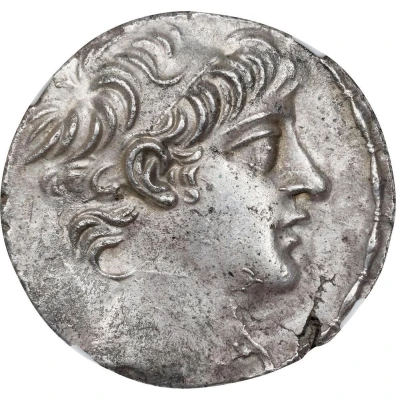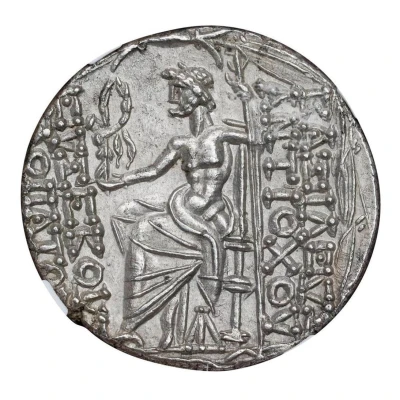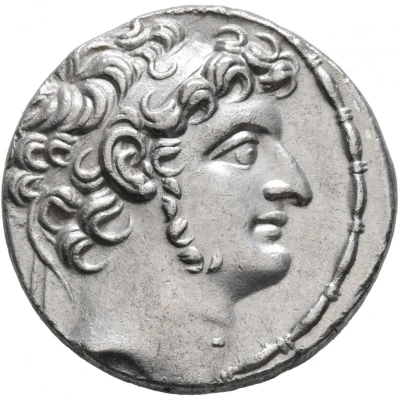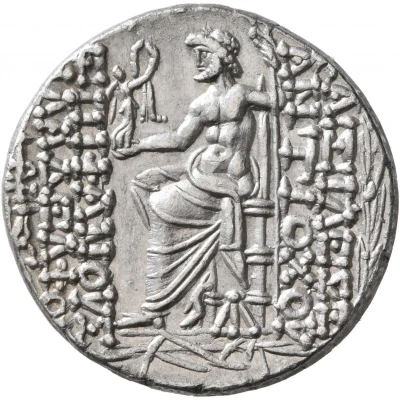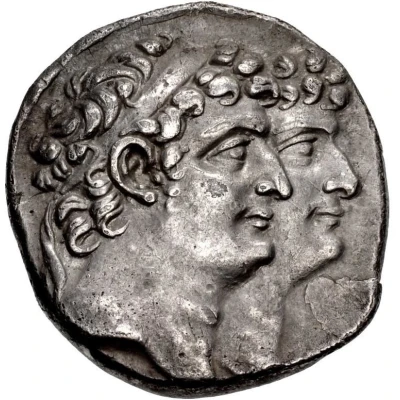
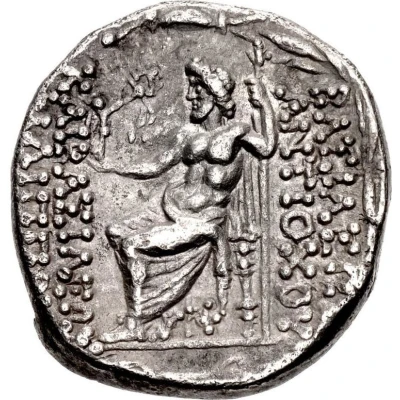

© Classical Numismatic Group, Inc.
Tetradrachm - Antiochos XI and Philip I 94 BC - 93 BC
| Silver | 15.75 g | 26 mm |
| Issuer | Seleucid Empire (Seleucid Empire (305 BC - 64 BC)) |
|---|---|
| King | Philip I Philadelphos (95 BC - 83 BC) Antiochos XI Epiphanes Philadelphos (93 BC) |
| Type | Standard circulation coin |
| Years | 94 BC - 93 BC |
| Value | Tetradrachm (4) |
| Currency | Drachm |
| Composition | Silver |
| Weight | 15.75 g |
| Diameter | 26 mm |
| Shape | Round (irregular) |
| Technique | Hammered |
| Orientation | Medal alignment ↑↑ |
| Demonetized | Yes |
| Updated | 2024-10-10 |
| Numista | N#429386 |
|---|---|
| Rarity index | 100% |
Reverse
Zeus Nikephoros seated left; Φ below throne.
Script: Greek
Lettering: BAΣIΛEΩ[Σ] ANTIOXOY KAI BAΣIΛEΩΣ ΦIΛIΠΠΟY
Comment
The very short joint reign of the brothers is only known from five issues of tetradrachms, all struck in Cilicia. Each feature the same portraiture and reverse type, but different control marks. Three of the issues were likely struck at Tarsos, while the other two, which includes the present coin, were struck at a presently unknown mint. All are extremely rare today.
Interesting fact
One interesting fact about this coin is that it features a unique blend of Greek and Persian influences in its design. The obverse side of the coin depicts the bust of Antiochos XI, while the reverse side features a seated Zeus, a common motif in Greek coinage. However, the coin also includes Persian elements, such as the use of Aramaic script and the depiction of a Persian king on the reverse side. This blending of cultures reflects the complex history of the Seleucid Empire, which was founded by a Greek general but eventually came to be ruled by Persian kings.
